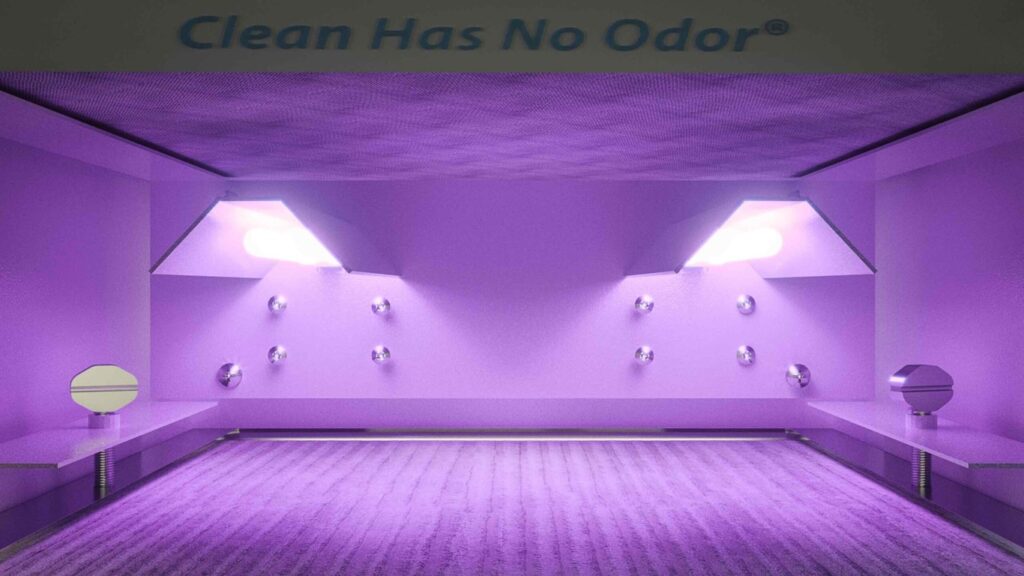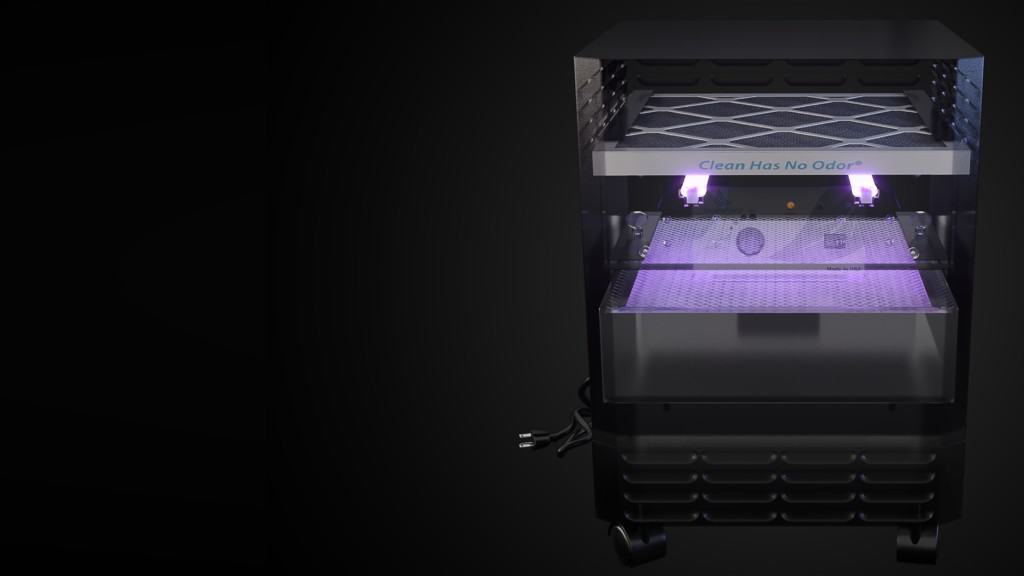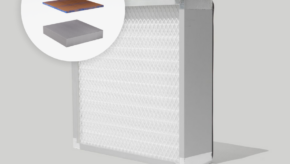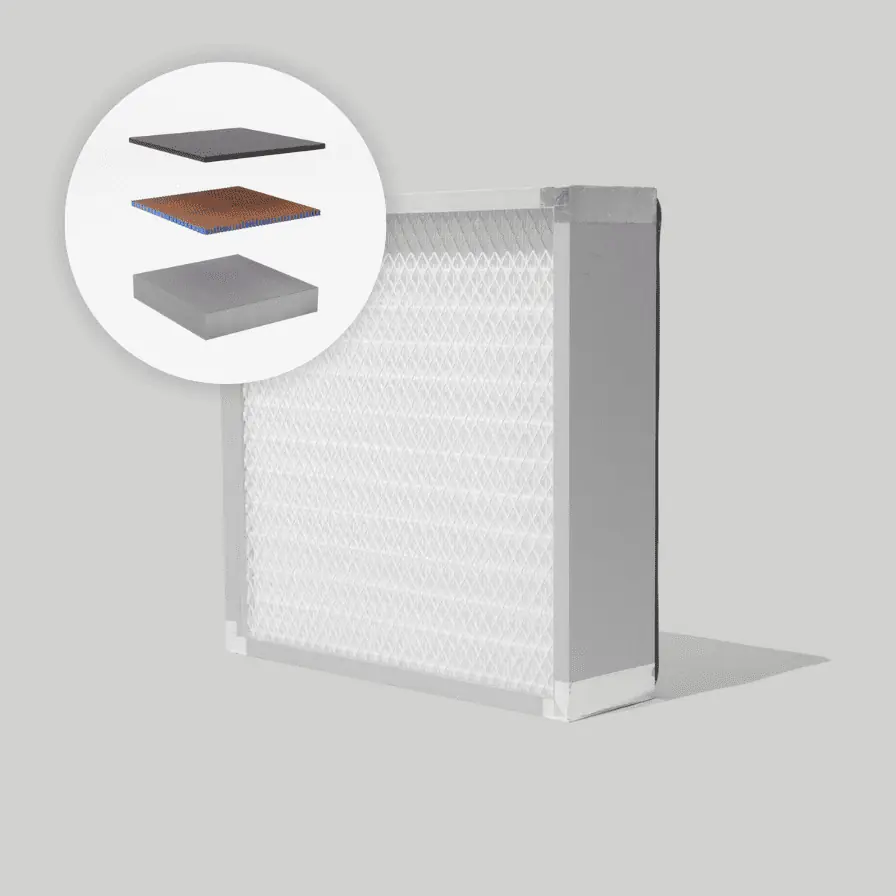Are you constantly at odds with the air inside of your home, whether it is allergens, particulate matter, or even pathogens that find their way within this indoor environment? Indoor air quality has become a top concern in the home and other indoor environments such as restaurants, office buildings, and other indoor spaces that contain a large number of occupants at a time. Unfortunately, sometimes in these indoor environments there will be major indoor air pollution issues that occur that can impact the IAQ of the environment like floods, leaks, mold growth, and even in recent times potential risks associated with the transmission of pathogens in the air.
Air filtration is one of the most heavily used resource for this type of environmental indoor air quality problem, however, the options to choose from within this industry can be plentiful – including HVAC filters, stand-alone air purifiers, and even industrial air scrubbers. Air purifiers with UV light integration, as well as air scrubbers have become two of the most talked about solutions when it comes to the mitigation of hazardous pollutants in the air of an indoor space, especially when it concerns airborne pathogens. What are the differences between an air scrubber and UV light air purifiers, and is one of these air filtration products a better option when it comes to remediating the indoor air of a home or business that is dealing with elevated levels of pathogens in the air?
In this article we are going to learn more about air scrubber’s vs UV light air filtration, how each of these air quality products work in the indoor air, and ultimately the benefits of using an air purification device with UV light capability.
Air Scrubber vs Air Purifier
Are you looking for an air filtration solution to help you remediate the air in your home that has become contaminated by certain microbes such as bacteria, viruses, and even mold spores? The two most popular, and sometimes interchangeably identified air filtration products on the market today is the air purifier and the air scrubber. Although these two products are sometimes confused or believed to work in the same way, this is simply not the case. An air purifier is usually used for residential or small-scale environments that contain smaller square footage – about 1,000 sq. ft. Whereas an air scrubber is typically used in situations or environments that have dealt with a significant problem or disaster such as floods, fires, and other restoration project spaces.
An air scrubber will work to literally “scrub” the air of the indoor space using filters that are made from various fabrics to accomplish this effective air scrubbing. These industrial style air cleaners are most frequently used by mold remediation specialists, renovation companies, and other site jobs for a disaster restoration project. There are two types of air scrubbers that can be used; wet and dry air scrubbers. A wet air scrubber will employ the use of a liquid to help clean the air within an indoor environment by using a filter infused with a little water that will be enough to make it damp. A dry air scrubber will work completely differently, by sucking air through a dry filter and collecting pollutants such as pollen, dust, and other dangerous gases from the air.
In comparison, an air purifier is an air cleaning device that works by cleaning the air as it is pushed through the filtration stages housed within the specific air purification device. Many air purifiers will use certain air filters that will allow for the filtration process to be accomplished – and one of the most commonly used filters used in this type of air cleaner is the effective High-Efficiency Particulate Air (HEPA) filter for fine particulate removal. Additionally, many air purifiers are now turning to the use of UV lights in these air cleaners as a means to provide the device with the capability to deactivate and destroy microorganisms from the air.
How Does an Air Scrubber Work
When you integrate an air scrubber into an indoor environment such as a job site, disaster restoration project, or even inside a commercial building, the air scrubber is designed to work in a specific way through various filtration methods to accomplish an effective cleaning of the air. The filters used in an air scrubber work to filter out and remove contaminates within the air, as the air scrubber constantly draws in air several times each hour. This air scrubber will ultimately work by pulling in air from the indoor space, and the air will travel through the various filtration stages in this scrubber allowing for the contaminants to be mitigated from the released air.
Below we are going to break down the various filtration stages used in an air scrubber, as well as how each of these stages works when it comes to airborne contaminants, specifically microorganisms.
- Pre-Filters: The first stage of filtration for an air scrubber is the pre-filter that works to capture the large particulate matter present in the air. When these larger particles are removed it helps the unit maintain airflow, which will then help to increase the processing of more air space per minute – making the air scrubber more efficient.
- Carbon Filter: This is an optional stage of filtration in an air scrubber that will be beneficial in capturing and removing gas and other chemical vapors from the air that can cause an odor. Carbon filtration works through a process called adsorption, which allows the gas and chemical molecules to be trapped on the filter and removed from the air.
- Primary Filter: The primary filter within the air scrubber is the last stage of filtration that uses a HEPA filter for fine particulate removal. HEPA filtration is capable of removing particles as small as 0.3 microns in size at a 99.7% efficiency rating in most cases, since it is not a hospital-grade HEPA. This stage will be important when it comes to microbe removal in the air such as viruses, bacteria, and mold spores – which can all contribute to a potentially toxic indoor environment. However, one problem with this stage is that the HEPA filter may not be the most efficient for the removal of these microorganisms due to its inability to effectively capture these small particulate matter – as it operates at a 99.7% efficiency rating.
- Blower: Lastly, one of the most important components to an air scrubber is the efficient blower that allows for air to be pulled through the air scrubber and exhausts the filtered air out of the unit after it has passed through the filtration steps.
What Does a UV Light Do in an Air Purifier?

Some air purifiers will contain UV lights that are housed within the air purifier to aid in the removal of bacteria, viruses, and mold spores. However, what are UV lights and how do they work when utilized in an air purifier? UV light is a part of the electromagnetic spectrum that makes up all wavelengths of electromagnetic radiation, such as light, radio waves, and x-rays. According to the American Cancer Society, they state the following about UV light, “UV lights can come from a variety of man-made sources including sunlamps and sun beds (tanning beds and booths), phototherapy, black-light lamps, and mercury-vapor lamps”.
When UV lights are applied into an air purifier it usually is placed within the purifier to help eliminate airborne pathogens in the air, which is a beneficial characteristic to any air purification device. According to the Expert Rev Anti Infect Ther. Journal they found that the use of Ultraviolet (UV) irradiation, specifically UVC spectrum light will allow for the inactivation of microorganisms to damage the genetic material in the nucleus of the cell in the virus. This highly effective UVC irradiation is highly germicidal and has been used for a long period of time to prevent and treat localized infections in the early stages in an indoor air space. Ultimately, the UV lights will aid in assisting our health, specifically germicidal light like UV-C lights which are capable of killing bacteria and viruses when these microorganisms make contact with the light. Therefore, the benefits of using an air purifier with UVC lights is quite substantial for improving the air space of an indoor environment, especially from microorganisms in the air.
Is an Air Scrubber Worth it?
During the consideration process of which air filtration product, you want to utilize in either your home or in a commercial building, it is important to gather all information and feedback about the different benefits of using either an air scrubber or an air purifier. The Home Air Guides suggests that when it comes to filtering the air continually in an environment for longer periods of time, an air scrubber would NOT be the way to go – rather an air purifier would be best for the job. An air scrubber is best used as a temporary solution to clean the home’s air from a high influx of contaminants. The ideal jobs to use an air scrubber would be for a mold remediation job, major indoor renovations, or even a large disaster restoration project. Additionally, an air scrubber can be quite costly to utilize, as they can range from $1,000 to $3,000 in price, a pretty expensive price tag for cleaning a smaller area such as an office, home, or other small-scale commercial setting.
As of recently, the importance and challenges of mitigating indoor air of airborne microorganisms is increasingly of concern due to the current nationwide pandemic, therefore having an air quality device that can work to help eradicate these pathogens in the air can make a world of difference for the safety of both homeowners and workers/customers in commercial settings. Thus, having an air purification device that contains both UV lights and HEPA filtration may be your best bet against capturing and filtering out harmful pathogens present in the air space.
Are UVC Air Purifiers Safe to Use?
Is UV C safe in air purifier? UV C lights placed in air purifiers today work through a specific mechanism to act as germicidal irradiation for the air. When air passes through the UV lamps it will disinfect certain microorganisms in the air to aid in the improvement of the indoor air quality. One concern, however, of UV lights in air purifier is the potential for this light to produce ozone, when produced within certain wavelength ranges.
“According to a new study at the Center for Radiological Research at Columbia University Irving Medical Center (CUIMC). The findings suggest that the use of overhead far-UVC light in hospitals, doctors’ offices, schools, airports, airplanes, and other public spaces could provide a powerful check on seasonal influenza epidemics, as well as influenza pandemics.”
When it comes to ozone production, UVC lights will vary based on if they will create this byproduct into the air. The wavelengths that the UVC lights fall within will determine if ozone is a threat while using these specific lights used in different air purification systems. UVC lights or germicidal UV are at a much more specific wavelength than what is termed “UV” broadly, which encompasses the wavelengths of 100-380nm. UVC are low-pressure lamps, more like a fluorescent lamp, with a specific wavelength of 253.7nm. To create ozone from UV, the light wavelength would need to be in the range from 160-240nm. A safe choice when it comes to using a UV air purifier is to use a system like the EnviroKlenz Mobile UV Air Purifier, since the EnviroKlenz Air Purifier uses UVC lights that has a wavelength of 254nm (which is outside of the ozone producing range!).
Benefits of Using UV Air Sanitizer Purification System
The use of an air sanitizing UV air purifier inside of an indoor environment will be the perfect addition to try to remediate unwanted and potentially hazardous airborne microbes from the air. Air purifiers that use both a HEPA filter and UVC germicidal lights will effectively work in conjunction with one another to provide the capability to capture those fine particulate matter on the dense filter of the HEPA, while also having UVC lights that are positioned directly above the filter to provide a highly effective deactivation and destruction of the collected microorganisms.
UVC are low-pressure lamps, more like a fluorescent lamp, with a specific wavelength of 253.7 nm (1182.5 THz). The production of ozone from UV lights, the light wavelength would need to be at a specific range of 160 to 240 nm. Some air purifiers will fall between this range where ozone will eventually be produced into the airspace of the environment, this can be a potential hazard to both your indoor environment and the health of those who are exposed to this byproduct in the air, particularly in higher levels.

The EnviroKlenz UV Air Purifier, on the other hand, is an air purification system that utilizes ultraviolet germicidal radiation (UV C) but this light has been tested to determine that this specific UV C light does not produce ozone into the air. The EnviroKlenz UV Air Purifier has a wavelength of 254 nm, which is outside the ozone producing range. Additionally, the UV C lights contained in this air purifier is effectively able to shine on the collection of microorganisms such as mold spores, bacteria, and viruses, that are collected on top of the hospital-grade HEPA filter, situated below the UV C lamps within this air purifier.
Article Sources:
- Priority Rental: How Does an Air Scrubber Work? (link)
- Expert Rev Anti Infect Ther.: Ultraviolet C Irradiation: An Alternative Antimicrobial Approach to Localized Infections? (link)
- Home Air Guides: Air Purifier vs Air Scrubber: What’s the Difference? (link)
- Columbia University Irving Medical Center: Can UV Light Fight the Spread of Influenza? (link)








